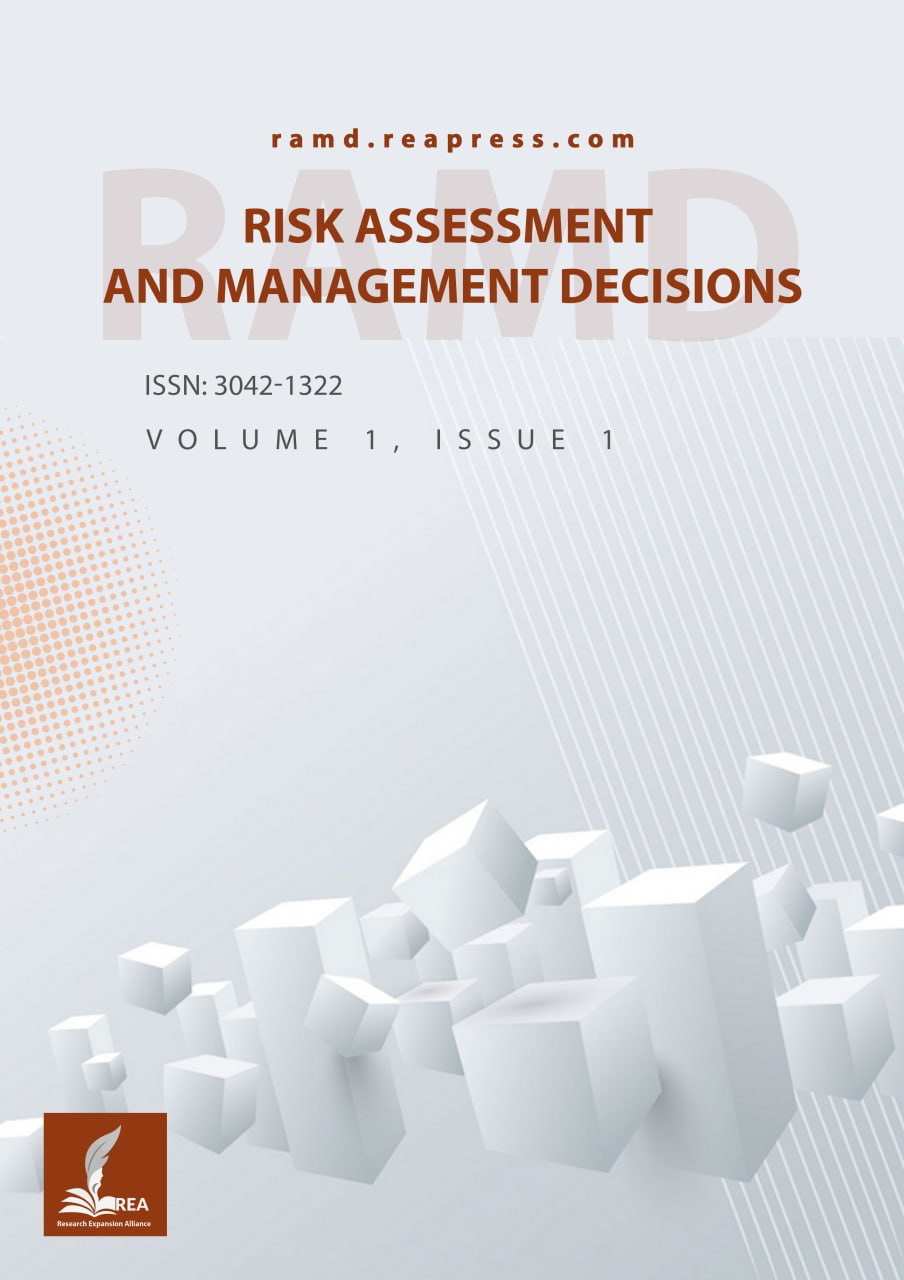Towards an Info-Geometric Theory of the Analysis of Non-Time Dependent Queueing Systems
Abstract
Information Geometry (IG) offers a differential geometric perspective for examining statistical models, where families of probability distributions are regarded as manifolds. This paper presents a new method for modeling the IG of a stable M/G/1 queueing system. By defining the M/G/1 queue manifold, the Fisher Information Matrix (FIM) and its inverse (IFIM) are derived, demonstrating the critical influence of system stability on the existence of IFIM. Divergence measures like Kullback's Divergence (KD) and J-Divergence (JD) are explored, revealing the effects of server utilization and the squared coefficient of variation on these measures. It is established that the stable M/G/1 queue manifold is developable (with zero Gaussian curvature) while containing a non-zero Ricci Curvature Tensor (RCT), along with new dynamics that connect RCT behavior to different stability phases. The Information Matrix Exponential (IME) is introduced, illustrating its instability and its reverse correlation with the stability of the M/G/1 manifold. The investigation is broadened to include other divergence measures, merging Queueing Theory, IG, and Riemannian Geometry. Connections to advanced machine learning and metric learning are examined, emphasizing queue learning as an innovative approach. A comprehensive analytical exploration incorporates Gaussian and Ricci curvatures, the Einstein Tensor, and the Stress-Energy Tensor, offering insights into their stability dynamics and geometric significance. For the first time, this research provides thorough derivations of Gaussian curvature, RCT, and their relationships with stability analysis. Computational IG is employed to visualize queueing systems, forging new links between Queueing Theory, matrix theory, IG, and the Theory of Relativity. This cohesive framework enhances both theoretical and practical understandings of queueing systems.
Keywords:
Einstein Tensor, Stress Energy Tensor, Riemannian metric, Inverse fisher information matrix, sAB divergence, QT-IG unifiersReferences
- [1] Mageed, I. A., Zhou, Y., Liu, Y., & Zhang, Q. (2023). Towards a revolutionary info-geometric control theory with potential applications of fokker planck kolmogorov (FPK) equation to system control, modelling and simulation. 2023 28th international conference on automation and computing (ICAC) (pp. 1-6). IEEE. https://doi.org/10.1109/ICAC57885.2023.10275271
- [2] Mageed, I. A., Yin, X., Liu, Y., & Zhang, Q. (2023). $mathbb {Z}_{a, b}$ of the stable five-dimensional $M/G/1$ queue manifold formalism's info- geometric structure with potential info-geometric applications to human computer collaborations and digital twins. 2023 28th International conference on automation and computing (ICAC) (pp. 1-6). IEEE. DOI: 10.1109/ICAC57885.2023.10275185
- [3] Mageed, I. A. (2024). Info-geometric analysis of gamma distribution manifold with gamma distribution impact to advance satellite earth observations. https://www.preprints.org/manuscript/202402.0968
- [4] Mageed, I. A., Zhang, Q., Akinci, T. C., Yilmaz, M., & Sidhu, M. S. (2022). Towards abel prize: the generalized brownian motion manifold's fisher information matrix with info-geometric applications to energy works. 2022 global energy conference (GEC) (pp. 379-384). IEEE. https://doi.org/10.1109/GEC55014.2022.9987239
- [5] Mageed, I. A. (2024). Info-geometric analysis of the stable queue manifold dynamics with queue applications to e-health. https://www.preprints.org/manuscript/202401.1813
- [6] Mageed, I. A., & Kouvatsos, D. D. (2021). The impact of information geometry on the analysis of the stable M/G/1 queue manifold. ICORES (pp. 153-160). DOI: 10.5220/0010206801530160
- [7] Mageed, I. A., & Kouvatsos, D. D. (2019). Information geometric structure of stable m/g/1 queue manifold and its matrix exponential. 35th UK performance engineering workshop 16 December 2019 (p. 116). https://www.researchgate.net/profile/Dr-Vijay-Singh-2/publication/340951179_proceedings/links/5ea70fb145851553fab34b07/proceedings.pdf#page=123
- [8] Miyagawa, S. (2010). MIT open course ware: How it began. https://www.nae.edu/162657/MIT-OpenCourseWare-How-it-Began
- [9] Mageed, I. A. (2024). On the Rényi entropy functional, tsallis distributions and lévy stable distributions. https://www.preprints.org/manuscript/202401.1996/download/final_file
- [10] Grivel, E., Diversi, R., & Merchan, F. (2021). Kullback-Leibler and Rényi divergence rate for Gaussian stationary ARMA processes comparison. Digital signal processing, 116, 103089.
- [11] Cai, T. T., Guo, Z., & Ma, R. (2023). Statistical inference for high-dimensional generalized linear models with binary outcomes. Journal of the american statistical association, 118(542), 1319–1332. https://doi.org/10.1080/01621459.2021.1990769
- [12] Marmin, A., de Morais Goulart, J. H., & Févotte, C. (2023). Majorization-minimization for sparse nonnegative matrix factorization with the $beta $-divergence. IEEE transactions on signal processing, 71, 1435-1447. https://arxiv.org/pdf/2207.06316
- [13] Cilingir, H. K., Manzelli, R., & Kulis, B. (2020). Deep divergence learning. International conference on machine learning (pp. 2027-2037). PMLR. http://proceedings.mlr.press/v119/cilingir20a/cilingir20a.pdf
- [14] Chow, B., Lu, P., & Ni, L. (2023). Hamilton’s Ricci flow (Vol. 77). American mathematical society, Science Press. https://books.google.com/books
- [15] Gilkey, P., Brozos-Vazquez, M., Garcia-Rio, E., Nikčević, S., & Vásquez-Lorenzo, R. (2022). The geometry of Walker manifolds. Springer Nature.
- [16] Bachmann, G., Bécigneul, G., & Ganea, O. (2020). Constant curvature graph convolutional networks. In International conference on machine learning (pp. 486-496). PMLR. http://proceedings.mlr.press/v119/bachmann20a/bachmann20a.pdf
- [17] Sun, A. (2020). Compactness of constant mean curvature surfaces in a three-manifold with positive Ricci curvature. Pacific journal of mathematics, 305(2), 735–756. https://arxiv.org/pdf/1804.09328
- [18] Meyer, C. D. (2023). Matrix analysis and applied linear algebra. SIAM. https://epubs.siam.org/doi/pdf/10.1137/1.9781611977448.bm
- [19] Zhang, Y., & Zheng, J. (2022). An overview of developable surfaces in geometric modeling. Recent patents on engineering, 16(5), 87–103. https://doi.org/10.2174/1872212115666210512021156
- [20] Kamarudzaman, A. S. M., Nasir, N. H. M., & Misro, M. Y. (2022). Gaussian and mean curvature of biquintic trigonometric bézier surface. Pertanika journal of science & technology, 30(2). https://www.researchgate.net/profile/Md-Yushalify-Misro/publication/359897709_Gaussian_and_Mean_Curvature_of_Biquintic_Trigonometric_Bezier_Surface/links/6273d691b1ad9f66c8a41971/Gaussian-and-Mean-Curvature-of-Biquintic-Trigonometric-Bezier-Surface.pdf
- [21] Wang, J., Xing, H., Jin, Z., Tan, Y., Pang, S., & Liu, J. (2023). 3D geometric modelling of the northwest pacific slabs: a review and new high-precision model. Earth-science reviews, 238, 104351. https://doi.org/10.1016/j.earscirev.2023.104351
- [22] Banica, T. (2024). Calculus and applications. ArXiv preprint arxiv:2401.00911. https://arxiv.org/pdf/2401.00911
- [23] Latayada, M. J. R. (2023). On the number of restricted one-to-one and onto functons having integral coordinates. European journal of pure and applied mathematics, 16(4), 2751–2762. http://www.ejpam.com/index.php/ejpam/article/view/4901/1532
- [24] Irving, R. S. (2013). Beyond the quadratic formula (Vol. 43). MAA. https://books.google.com/books
- [25] Mageed, I. A., & Zhang, Q. (2023). Threshold theorems for the tsallisian and rényian (tr) cumulative distribution functions (CDFs) of the heavy-tailed stable m/g/1 queue with tsallisian and rényian entropic applications to satellite images (SIs). Electronic journal of computer science and information technology, 9(1), 41–47. https://doi.org/10.52650/ejcsit.v9i1.161
- [26] Roussel, M. R. (2005). Stability analysis for ODEs. Nonlinear dynamics, lecture notes, university hall, canada, 78. https://fac.ksu.edu.sa/sites/default/files/stability.pdf
- [27] Schloss, J., Barnett, P., Sachdeva, R., & Busch, T. (2020). Controlled creation of three-dimensional vortex structures in Bose-Einstein condensates using artificial magnetic fields. Physical review a, 102(4), 43325. https://doi.org/10.1103/PhysRevA.102.043325
- [28] Bailes, M., Berger, B. K., Brady, P. R., Branchesi, M., Danzmann, K., Evans, M., …& others. (2021). Gravitational-wave physics and astronomy in the 2020s and 2030s. Nature reviews physics, 3(5), 344–366. https://doi.org/10.1038/s42254-021-00303-8
- [29] Dawkins, P. (2021). Paul’s Online Notes, web source. National council of teachers of mathematics. https://tutorial.math.lamar.edu/
- [30] Breneman, J. E., Sahay, C., & Lewis, E. E. (2022). Introduction to reliability engineering. John Wiley & Sons.
- [31] Mageed, I. A., & Zhang, Q. (2022). An information theoretic unified global theory for a stable $ m/g/1$ queue with potential maximum entropy applications to energy works. 2022 global energy conference (GEC) (pp. 300-305). IEEE. https://doi.org/10.1109/GEC55014.2022.9986719


